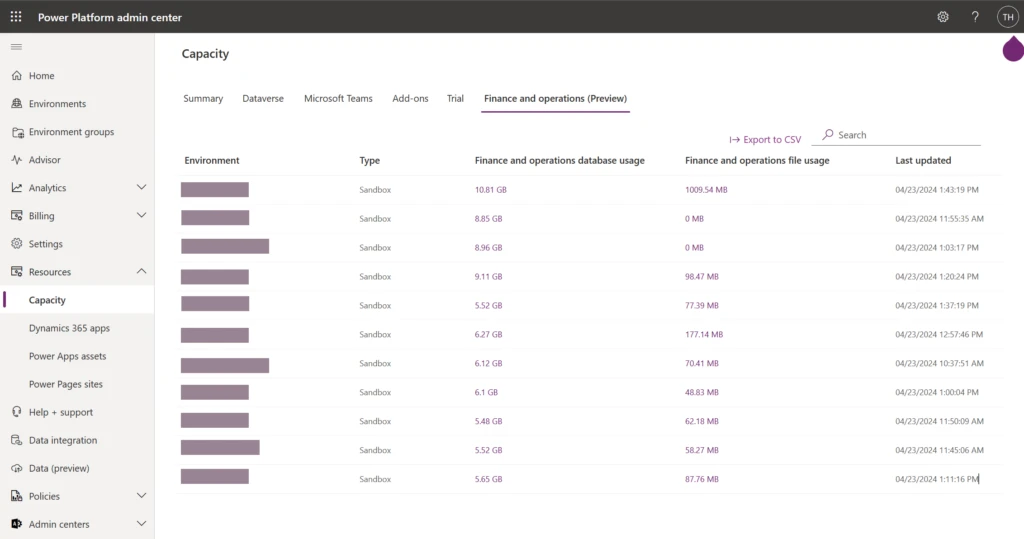
Create a data maintenance strategy for Dynamics 365 finance and operations data (part one)
Data maintenance—understanding what data needs to be stored where and for how long—can seem like an overwhelming task. Cleanup routines can help, but a good data maintenance strategy will make sure that you’re using your storage effectively and avoiding overages. Data management in Dynamics 365 isn’t a one-size-fits-all solution. Your strategy will depend on your organization’s implementation and unique data footprint. In this post, the first of a two-part series, we describe the tools and features that are available in Dynamics 365 finance and operations apps to help you create an effective storage maintenance plan. Part two focuses on implementing your plan.
Your data maintenance team
Data maintenance is often thought to be the sole responsibility of system admins. However, managing data throughout its life cycle requires collaboration from all stakeholders. Your data maintenance team should include the following roles:
- Business users. It goes without saying that users need data for day-to-day operations. Involving them in your planning helps ensure that removing old business data doesn’t interfere with business processes.
- BI and reporting team. This team comprehends reporting requirements. They can provide insights into what data is essential for operational reports and should be kept in live storage or can be exported to a data warehouse.
- Customization team. Customizations might rely on data that’s targeted by an out-of-the-box cleanup routine. Your customization partner or ISV should test all customizations and integrations before you run a standard cleanup in the production environment.
- Auditors and controllers. Even financial data doesn’t need to be kept indefinitely. The requirements for how long you need to keep posted data differ by region and industry. The controlling team or external auditors can determine when outdated data can be permanently purged.
- Dynamics 365 system admins. Involving your admins in data maintenance planning allows them to schedule cleanup batch jobs during times when they’re least disruptive. They can also turn on and configure new features.
- Microsoft 365 system admins.The finance and operations storage capacity report in the Power Platform admin center is helpful when you’re creating a data maintenance strategy, and these admins have access to it.
Tools for reviewing storage usage
After you assemble your team, the next step is to gather information about the size and footprint of your organization’s finance and operations data using the following tools:
- The finance and operations storage capacity report shows the storage usage and capacity of your Dynamics 365 environments down to the table level.
- Just-in-time database access allows you to access the database of a sandbox environment that has been recently refreshed from production. Depending on the storage actions you have set up or the time since the last database restore, the sandbox might not exactly match the production environment.
Features for managing storage
A comprehensive data maintenance strategy takes advantage of the data management features of Dynamics 365 finance and operations apps. The following features should be part of your plan.
Environment life cycle management is the process of creating, refreshing, and decommissioning sandbox environments according to your testing and development needs. Review your environments’ storage capacity and usage on the Finance and operations page of the capacity report.

Critically assess the environments and their usage and consider decommissioning sandboxes that you no longer need. For instance, if the system is post go-live, can you retire the training environment? Are performance tests less frequent and easier to run in the QA environment when users aren’t testing?
We highly recommend that you don’t skip the sandbox decommissioning discussion. Reducing the number of sandboxes has a far greater effect on total storage usage than any action that targets a specific table.
Cleanup routines are standard or custom functions that automatically delete temporary or obsolete data from the system.
Retention settings schedule automatic cleanup of certain data after a specified length of time. For example, document history includes a parameter that specifies the number of days to retain history. These cleanup routines might run as batch jobs or behind the scenes, invisible to admins.
Archiving functions move historical data to a separate storage location.
Compression routines reduce the size of data in storage. For example, the Compress payment tokens feature applies compression to stored payment property tokens.
Next step
In this post, we covered the roles and responsibilities of your data strategy team, tools for reviewing database storage, and data management features beyond cleanup routines. We suggested that you begin your planning process by reviewing your sandboxes. In part two, we discuss a strategy for specific tables and actions to take.
Learn more
Not yet a Dynamics 365 customer? Take a tour and start a free trial.




